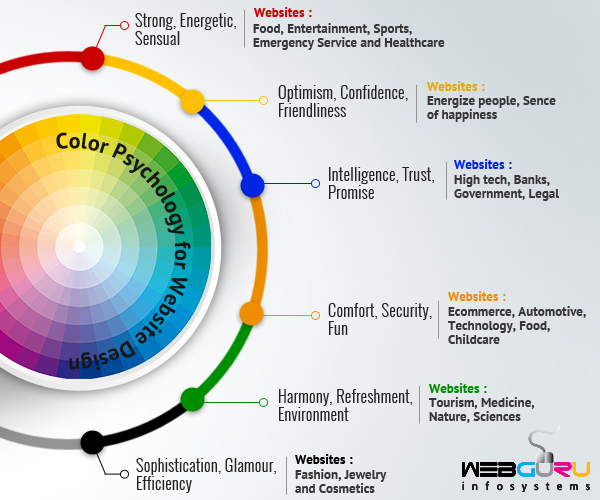The Psychology of Color in Web Design
by Admin
Posted on 13-06-2023 09:42 AM

This page may contain links from our sponsors. Here’s how we make money. Web design needs to do several things at once.
 It must look good. It must make sure the navigation of the
website
is clear. It must hold an internet user’s attention for as long as possible. And it must gently lead the user down the conversion funnel, quietly urging the user to take whatever action the site owners have as the goal of the site. Because web design needs to have an influence over people’s behavior, more and more designers have been looking to the psychology of color to help them create websites.
It must look good. It must make sure the navigation of the
website
is clear. It must hold an internet user’s attention for as long as possible. And it must gently lead the user down the conversion funnel, quietly urging the user to take whatever action the site owners have as the goal of the site. Because web design needs to have an influence over people’s behavior, more and more designers have been looking to the psychology of color to help them create websites.
Colour psychology studies the impact of colours on human behaviour, emotions, and perceptions. Using the right colours in your web design can boost engagement and conversion rates. Designers must be careful with generalisations, as colour-emotion associations can differ across cultures. In today’s digital age, creating an effective user interface (ui) and user experience (ux) is critical for the success of any digital product. Ui and ux design don’t just make websites and apps visually appealing but also play a significant role in ensuring that users can navigate these products with ease and accomplish their desired tasks. Since these desired tasks (e.
Color. It’s everywhere, impacting how we think, feel and behave. In web design, colors influence where we look, what we click, and how we interpret elements on a website. So as a web designer, it’s important to understand how colors work and how to harness their power. You’re probably already aware of some basic color psychology, like red meaning danger in western culture, but how we understand color is still mostly subjective. People have personal preferences when it comes to color, usually impacted by our upbringing, experiences and events, and cultural background. Still, there are some common generalities and patterns around how people respond to color, which we’ll explore in this post.
Blog the psychology of colour is a hidden tool in the world of marketing and advertising. Using this knowledge in the right way can help visitors to your website stick around for longer and follow your highly planned out cta (call to action) – this is the golden ticket to elevated user experience that will not hurt your bottom. The solutions to targeting the right attitudes and emotions lies in the spectrum of colour that our brains react differently to. The experienced graphic designers and developers in our team at 4sight are well versed in the psychology of colour and instil their knowledge into every website they design.
It’s important to understand that color is interpreted differently for every person. Gender, age, and other societal considerations have a profound impact on how colors are perceived. Sometimes, it’s not always the actual color that brings out feelings; it’s about how a person feels when a specific color is used by a brand. Even personal experiences may skew someone’s opinion about a color, which is entirely out of your control. All of that being said, there have been plenty of studies conducted to give us some concrete data and trends to keep in mind. Here is a breakdown of how people commonly perceive some colors and how you can take advantage of this for your web design!.
Where Should I Use Colors?
The perception of color is something that human beings have studied intently for many centuries.
 Ancient greek philosophers would argue over whether colors were made of black, white, and red light, or whether it was simply some sort of celestial light that shone down from the heavens. Sir isaac newton spent many hours experimenting with prisms and ultimately theorized the three primary colors from which other colors are made (blue, red, and bright yellow). And as we’ve come to know more about human biology and anatomy, researchers and scientists have spent a great deal of energy studying how the human brain perceives color.
Ancient greek philosophers would argue over whether colors were made of black, white, and red light, or whether it was simply some sort of celestial light that shone down from the heavens. Sir isaac newton spent many hours experimenting with prisms and ultimately theorized the three primary colors from which other colors are made (blue, red, and bright yellow). And as we’ve come to know more about human biology and anatomy, researchers and scientists have spent a great deal of energy studying how the human brain perceives color.